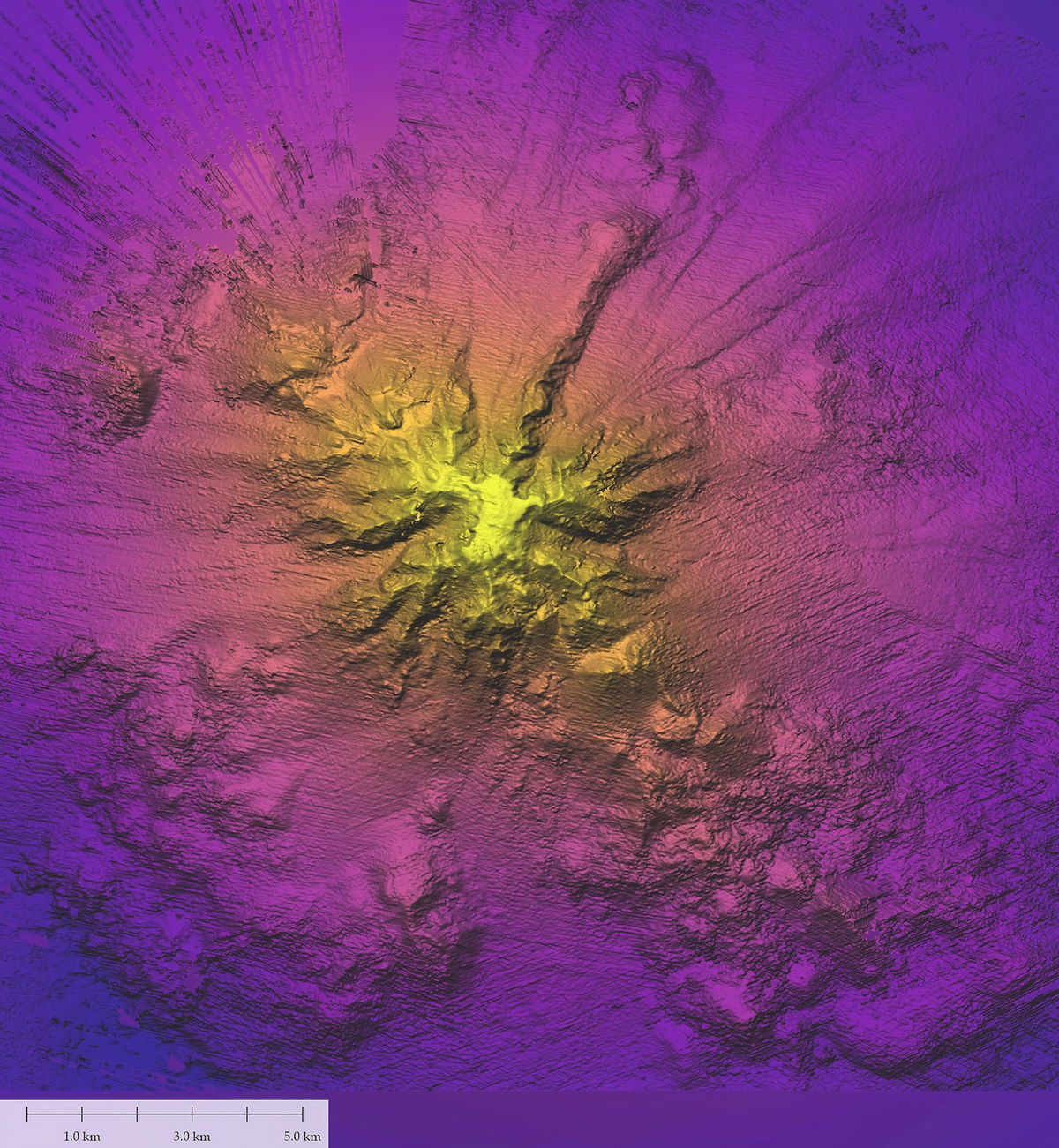Newly found seamount reveals spaghetti monster and other rare ocean creatures

A rarely seen Bathyphysa conifera
By Katie Hunt, CNN
(CNN) — What lies beneath the waves is among the planet’s biggest mysteries.
About half of Earth’s surface remains unknown and unexplored. That’s because humans have mapped only a quarter of the seafloor, which covers around 70% of the planet, to a high resolution.
But how do you find what you can’t see? Technology including sonar, which uses sound waves to identify objects in water, and remotely operated vehicles have explored the dark ocean depths, revealing unknown species, geological features and mysterious phenomena.
Oceanographers aim to have a definitive map of the seabed by 2030, and an exciting underwater discovery announced this week brings that goal a bit closer to reality.
Ocean secrets
Many of the world’s highest mountains aren’t visible on land — they rise up thousands of meters from the seafloor.
An expedition to the Nazca Ridge, 900 miles off the coast of Chile, has mapped and explored a newly discovered seamount four times taller than the world’s tallest building.
What’s more, the underwater mountain’s peaks, crags and ridges are home to coral gardens that host rare deep-dwelling octopuses, squids and creatures known as flying spaghetti monsters, some of which hadn’t been well documented before this research.
The Nazca Ridge is one of several oceanic regions under consideration to be a high seas marine protected area, a designation made possible by a newly adopted United Nations treaty.
Defying gravity
Polaris Dawn, the ambitious mission aiming to send four civilians soaring in a SpaceX capsule to attempt the world’s first commercial spacewalk, failed to get off the ground this week.
Issues with equipment at the launchpad at NASA’s Kennedy Space Center in Florida first forced a 24-hour delay. Another scrub caused by an unfavorable weather outlook for splashdown soon followed.
Earlier in the week, a Federal Aviation Authority investigation into SpaceX’s Falcon 9 rocket, which will power the initial part of the Polaris Dawn crew’s journey to orbit, added another layer of uncertainty. Another rocket from the same family failed to land upright and exploded Wednesday after a Starlink satellite launch, causing the FAA to ground the vehicle.
The Falcon 9 has since been cleared to fly again, but it’s still unclear when the Polaris mission will lift off. For now, the four crew members, including billionaire Jared Isaacman, remain in quarantine.
Dino-mite
Paleontologists have found matching dinosaur footprints on different continents 3,700 miles — and an ocean — apart.
Preserved in mud and silt in what’s now Brazil and Cameroon, the 260 footprints are similar in age, shape and geologic context, although it’s not possible to know for sure whether the same species made them.
Most of the fossilized prints were created by three-toed theropod dinosaurs, while a few likely belonged to lumbering four-legged sauropods with long necks and tails or ornithischians, which had pelvic structures similar to birds.
The discovery is vivid evidence of how 120 million years ago the world was home to a massive landmass known as Gondwana, which created ideal conditions for dinosaurs before supercontinents broke apart and shifted into the seven continents we know today.
Other worlds
The James Webb Space Telescope has spotted six rogue worlds, bigger in size than Jupiter, that don’t orbit a star.
Astronomers discovered the celestial objects in a star-forming nebula, or a cloud of gas and dust, named NGC 1333. The nebula is located 960 light-years away within a larger region of gas and dust called the Perseus molecular cloud.
Observations made with the telescope will help astronomers understand how these free-floating worlds evolve.
It’s possible that the planet-like bodies initially form around and orbit stars but are kicked away by gravitational interactions with other objects.
A long time ago
Paleontologists have solved a prehistoric cold case, piecing together how a sea cow, a manatee-like creature, met an especially violent end some 15 million years ago.
Bite marks on the unusual fossil unearthed in what’s now Venezuela revealed that the ancient marine mammal was killed by a croc that sank its teeth into the sea cow’s snout before pulling it down into a death spiral — a tactic also used by present-day crocodiles to subdue their prey.
Then, the paleontologists believe, a shark dined upon the sea cow’s remains. The smoking gun? A tooth belonging to a tiger shark, a consummate scavenger, was found impaled in the fossil’s neck.
Explorations
Check out these mind-expanding stories:
— NASA’s DART mission may have created the first human-made meteor shower. However, it will take years to know for sure.
— A sunken bridge may reveal when islands in the Mediterranean were first settled by ancient humans.
— Marmosets use names to communicate, joining a short list of species exhibiting such complex behavior.
— Boeing’s troubled Starliner spacecraft finally has a return date. But it will come back to Earth without its crew.
Like what you’ve read? Oh, but there’s more. Sign up here to receive in your inbox the next edition of Wonder Theory, brought to you by CNN Space and Science writers Ashley Strickland and Katie Hunt. They find wonder in planets beyond our solar system and discoveries from the ancient world.
The-CNN-Wire
™ & © 2024 Cable News Network, Inc., a Warner Bros. Discovery Company. All rights reserved.